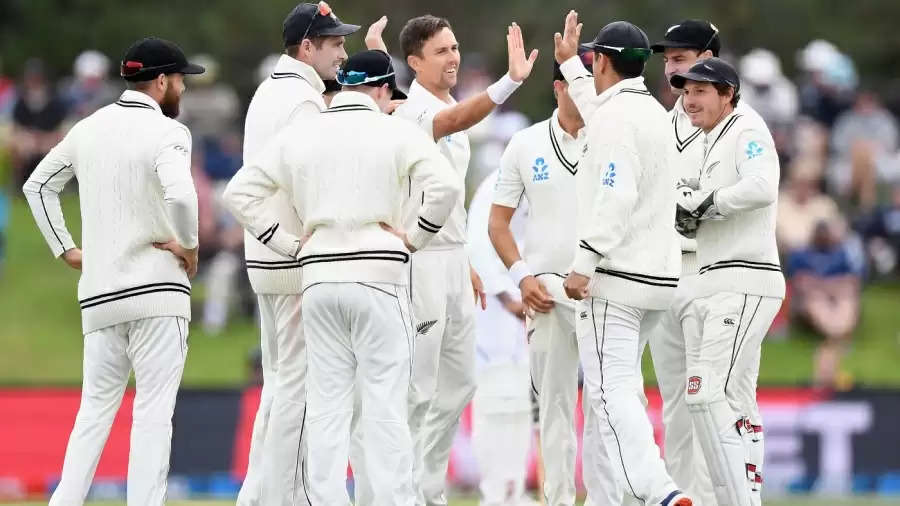How have New Zealand’s top 5 quicks fared in the World Test Championship (WTC) so far

While the batsmen have provided an able hand, much of the credit for New Zealand reaching the final of the World Test Championship against India goes to their bowlers.
The Kiwis boast of unprecedented riches when it comes to the fast-bowling, with the kind of depth and variety in the arsenal that would be a cause of envy for other Test teams in the world.
Even though their batsmen chipped in with crucial contributions from time to time, it’s New Zealand’s bowling attack that has closed out any possible openings for the opposition through the WTC cycle.
New Zealand pulled off comprehensive series wins at home against India, West Indies and Pakistan and also drew 1-1 in Sri Lanka through their league campaign. With their only blip coming in Australia, New Zealand finished second in the WTC points table.

Ahead of their ultimate clash with the Indians in Southampton, starting June 18, we focused on how the prominent names in their first-choice pace attack have individually fared through the inaugural cycle of WTC so far.
Also Read: World Test Championship 2019-2021: A XI Of The Best From The WTC Cycle

How have New Zealand’s top 5 quicks fared in the World Test Championship so far
Trent Boult – 9 matches 34 wickets at 29.29
Boult has had a topsy-turvey WTC campaign for New Zealand so far. He struggled in Galle but then bounced back strongly in his team’s impressive victory at Colombo. He went down with an injury in Australia but then made amends with a few very crucial spells at home against India. Boult couldn’t perform as per expectations against a beleaguered West Indies side but then performed better against a more robust Pakistan unit.
Boult’s tally for the WTC cycle belies his ability and tag as one of the world’s most threatening new-ball bowlers. However, the left-arm swing bowler will have a chance to stand resurrected in the WTC final and could prove devastating in English conditions against Indian batsmen at the Rose Bowl.
Tim Southee – 10 matches 51 wickets at 20.66
Southee ended as New Zealand’s top wicket-taker from the league stage of the WTC. He started off very impressively, taking six wickets in his team’s victory at Colombo and backed it up with 12 wickets Down Under, including a five-fer in the D/N encounter at Perth.
Southee took that wave of confidence forward to the home terrain and dominated the visiting India, West Indies and Pakistan batsmen in familiar conditions. If the surface at Rose Bowl offers some seam movement to go with the swing available with the dukes ball, Southee could be lethal against India.
Neil Wagner – 7 matches 32 wickets at 22.50
Wagner, the bustling unorthodox left-arm seamer, didn’t play all of New Zealand’s games through the league stage but still made his presence felt. Wagner was especially brilliant in Australia, where other New Zealand quicks couldn’t extract as much out of the tracks Down Under as he did.
With his barrage of bouncers and a knack of bowling the hard lengths, Wagner troubled the Aussie batsmen across Perth, Melbourne and Sydney in a series performance that should be remembered in years to come.
After Australia, Wagner enjoyed a healthy share of the wickets at home against India, West Indies and Pakistan, with his tendency to overcome the flatness of the surfaces in the second half providing New Zealand the edge. He will be looking to replicate that in the WTC final in Southampton.
Kyle Jamieson – 6 matches 36 wickets at 13.27
Jamieson’s swift progress at the Test level reflects the good health of the cricketing system in New Zealand. The tall right-arm quick added to the robustness of the Kiwi attack and made it a compulsion for skipper Kane Williamson to go in with a four-pronged pace unit.
Jamieson helped New Zealand dominate the crucial later half of their WTC league campaign, where they whitewashed all three of their visitors 2-0. Jamieson bowled commendably in his debut series against India, had a great time facing up to the Caribbean boys and bowled superbly versus Pakistan.
Colin de Grandhomme – 6 matches 11 wickets at 36.72
De Grandhomme’s numbers could give a misleading picture regarding his performance, but he has been vital cog in New Zealand’s wheels. De Grandhomme’s presence as an all-rounder cricketer gives the Kiwis depth in either department. He has the ability to provide crucial runs lower down the order and can also chip in with useful breakthroughs, give other pacemen some important breathing space.
De Grandhomme couldn’t play against West Indies and Pakistan due to injury, but certainly played his part in the victories in Colombo against Sri Lanka and Wellington, Christchurch versus India. He will be hoping to once again produce the goods against the mighty Asian giants at Rose Bowl.

